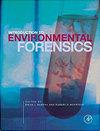库拉河沿人为干扰梯度沉积物中金属的分布、来源及生态风险评价
IF 1.2
4区 环境科学与生态学
Q4 ENVIRONMENTAL SCIENCES
引用次数: 6
摘要
摘要淡水资源污染状况监测是可持续规划的重要环节。本研究旨在确定跨界东安纳托利亚/高加索地区库拉河沉积物中金属的分布、来源及其生态风险水平。沿人为干扰梯度在8个地点采集了地表沉积物样本。采用电感耦合等离子体质谱(ICP-MS)对样品进行多元素分析。采用分光光度法分析叶绿素降解产物(CDP)。用滴定法进行OC分析。利用富集系数、地质累积、修正危害商、生态污染指数和潜在生态风险等指标对数据进行评价。8个地点沉积物中金属平均含量由高到低依次为Al > Mn > Zn > V> Ni > Cr > Cu > Co > Pb > As > Cd > Tl > Hg。从金属原价分布来看,城市化并不是控制金属原价分布的唯一因素。吸附过程和有机物含量也成为重要的影响因素。富集因子值以下的顺序:T1 > >铅>锰>汞、铬>有限公司> Cd >镍> >锌> >铜> V。结果表明,Cu、V和Al的来源为岩石成因,而Tl、Pb、Mn、Hg、Cr、Co、Cd、Ni和As的来源为人为积累。根据潜在生态风险指数,这些要素具有产生中高水平生态风险的潜力,主要来源于大气。生态污染指数在风险水平上也与研究结果一致。城市垃圾流、化石燃料燃烧和附近的水泥厂似乎也是可能的来源。本文章由计算机程序翻译,如有差异,请以英文原文为准。
Distribution, sources and ecological risk assessment of metals in Kura river sediments along a human disturbance gradient
Abstract Monitoring the pollution status of freshwater resources is an important step in sustainable planning. This study aimed to determine the distribution and sources of metals in the sediments of the transboundary eastern Anatolian/Caucasus region Kura river as well as its ecological risk level. Surface sediment samples were collected from eight sites along the human disturbance gradient. Multi-element analyses of the collected samples were performed using Inductively Coupled Plasma Mass Spectrometry (ICP-MS). Chlorophyll degradation product (CDP) analysis was performed spectrophotometrically. OC analysis was carried out using the titration method. The data obtained were evaluated using the indices of enrichment factor, geo-accumulation, modified hazard quotient and ecological contamination index and potential ecological risk. The average content of metals in the sediment at the eight sites was of the following descending order from highest to lowest: Al > Mn > Zn > V> Ni > Cr > Cu > Co > Pb > As > Cd > Tl > Hg. According to the distribution of raw metal values, urbanization is not the only factor controlling metal distribution. Adsorption processes and organic material content also emerge as an important factor. Enrichment factor values were of the following order: T1 > Pb > Mn > Hg > Cr > Co > Cd > Ni > As > Zn > Al > Cu > V. Results revealed that the sources of Cu, V and Al were lithogenic, in contrast to Tl, Pb, Mn, Hg, Cr, Co, Cd, Ni, and As, thus pointing to human-induced accumulation. According to the potential ecological risk index, these elements have the potential to create medium-to-high level ecological risks and were substantially of atmospheric origin. The ecological contamination index is also consistent with these findings in terms of risk level. A municipal waste stream, fossil fuel burning and a cement plant operating in close proximity also appeared to be the possible sources.
求助全文
通过发布文献求助,成功后即可免费获取论文全文。
去求助
来源期刊

Environmental Forensics
环境科学-环境科学
CiteScore
4.90
自引率
5.60%
发文量
23
审稿时长
3 months
期刊介绍:
Environmental Forensics provides a forum for scientific investigations that address environment contamination, its sources, and the historical reconstruction of its release into the environment. The context for investigations that form the published papers in the journal are often subjects to regulatory or legal proceedings, public scrutiny, and debate. In all contexts, rigorous scientific underpinnings guide the subject investigations.
Specifically, the journal is an international, quarterly, peer-reviewed publication offering scientific studies that explore or are relevant to the source, age, fate, transport, as well as human health and ecological effects of environmental contamination. Journal subject matter encompasses all aspects of contamination mentioned above within the environmental media of air, water, soil, sediments and biota. Data evaluation and analysis approaches are highlighted as well including multivariate statistical methods. Journal focus is on scientific and technical information, data, and critical analysis in the following areas:
-Contaminant Fingerprinting for source identification and/or age-dating, including (but not limited to) chemical, isotopic, chiral, mineralogical/microscopy techniques, DNA and tree-ring fingerprinting
-Specific Evaluative Techniques for source identification and/or age-dating including (but not limited to) historical document and aerial photography review, signature chemicals, atmospheric tracers and markets forensics, background concentration evaluations.
-Statistical Evaluation, Contaminant Modeling and Data Visualization
-Vapor Intrusion including delineating the source and background values of indoor air contamination
-Integrated Case Studies, employing environmental fate techniques
-Legal Considerations, including strategic considerations for environmental fate in litigation and arbitration, and regulatory statutes and actions
 求助内容:
求助内容: 应助结果提醒方式:
应助结果提醒方式:


